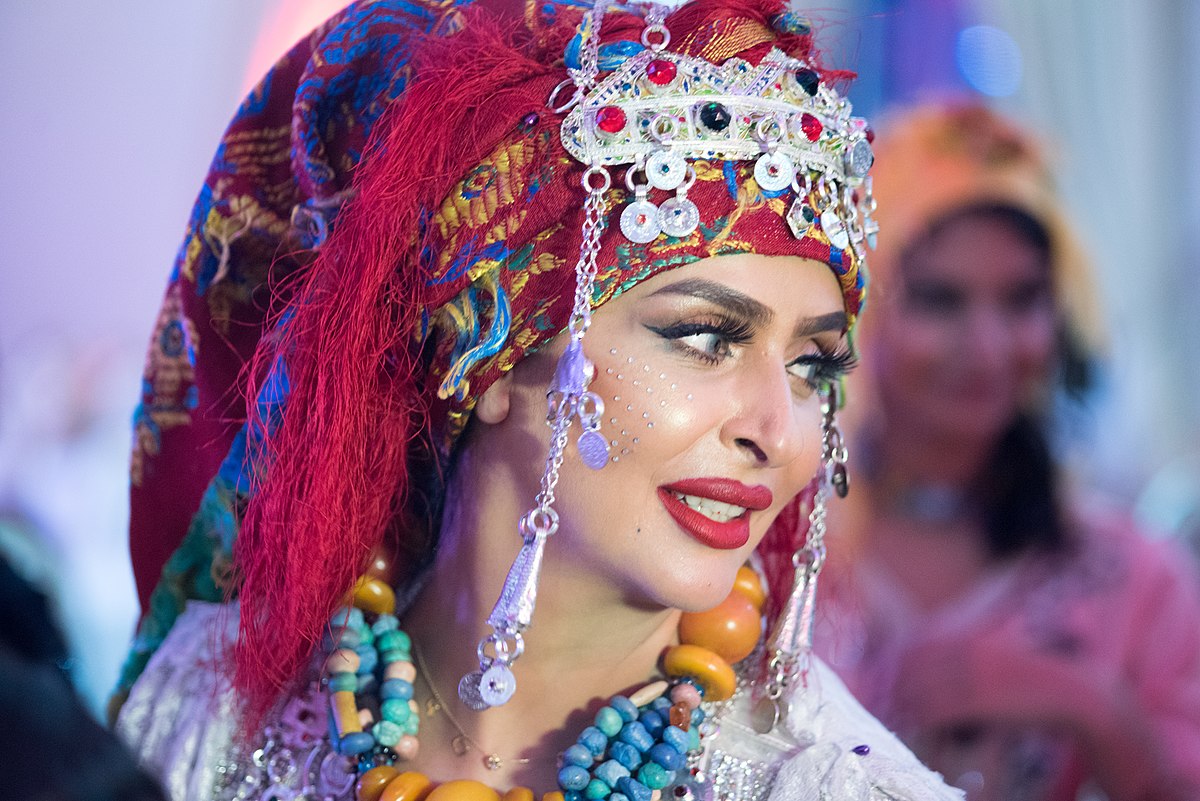Introduction
The Amazigh, often known as Berbers, are an indigenous people of North Africa. They have a rich history, vibrant culture, and distinct identity that has survived for thousands of years. This article aims to provide an in-depth understanding of the Amazigh people, their heritage, traditions, language, and their place in the modern world.
Who Are the Amazigh?
Origins and History
The Amazigh people, whose name means “free people” or “noble men,” have lived in North Africa for at least 4,000 years. They are believed to have descended from prehistoric tribes in the region, with their presence documented by ancient Egyptians, Greeks, and Romans. Over the centuries, they have resisted numerous invasions, including those by the Phoenicians, Romans, Arabs, and French, maintaining their unique identity and culture.
Geographic Distribution
Today, the Amazigh are spread across several North African countries, including:
- Morocco: Home to the largest Amazigh population.
- Algeria: Significant Amazigh communities, especially in the Kabylie region.
- Tunisia: Smaller, yet culturally vibrant Amazigh groups.
- Libya: Particularly in the Nafusa Mountains and the southern regions.
- Mali and Niger: The Tuareg, a nomadic Amazigh group, inhabit these areas.
The Amazigh Flag
The Amazigh flag is a symbol of their identity and struggle for recognition. It consists of three horizontal stripes in blue, green, and yellow, representing the sea, mountains, and desert, respectively. The red “Yaz” symbol in the center stands for freedom and resistance.
Amazigh Language
Tamazight: The Heart of Amazigh Identity
The Amazigh language, known as Tamazight, is a cornerstone of their cultural identity. Tamazight has several dialects, such as:
- Tachelhit: Spoken in southwestern Morocco.
- Tamazight of the Atlas: Spoken in the Atlas Mountains.
- Kabyle: Predominant in the Kabylie region of Algeria.
- Tuareg: Used by the Tuareg people in the Sahara Desert.
The Tifinagh Script
Tamazight is written in the ancient Tifinagh script, which dates back to at least the 3rd century BC. The script has undergone several adaptations but remains a significant symbol of Amazigh heritage.
Language Preservation Efforts
There have been numerous efforts to preserve and promote Tamazight, including:
- Educational Programs: Introducing Tamazight in schools.
- Media Presence: Broadcasting in Tamazight on television and radio.
- Cultural Festivals: Celebrating Amazigh language and traditions.
Amazigh Culture
Traditional Clothing
Amazigh clothing is colorful and richly decorated, often featuring intricate embroidery. Key garments include:
- The Djellaba: A long, loose-fitting robe with a hood.
- The Burnous: A woolen cloak, typically worn by men.
- The Takchita: A traditional dress for women, often worn at weddings and festivals.
Music and Dance
Music and dance are integral parts of Amazigh culture. Some popular forms include:
- Ahidous: A communal dance performed by men and women in a circle.
- Rways: Traveling musicians who perform traditional Amazigh songs.
- The Guedra: A spiritual dance of the Tuareg people.
Cuisine
Amazigh cuisine is known for its use of local ingredients and bold flavors. Some traditional dishes are:
- Couscous: A staple made from steamed semolina, served with meat and vegetables.
- Tagine: A slow-cooked stew made in a clay pot.
- Amlou: A spread made from almonds, argan oil, and honey.
Art and Craftsmanship
The Amazigh are renowned for their craftsmanship, particularly in:
- Jewelry: Silver is commonly used, often adorned with colorful stones.
- Carpets: Hand-woven with geometric patterns and bright colors.
- Pottery: Decorated with traditional motifs.
Amazigh Traditions and Festivals
Yennayer: The Amazigh New Year
Yennayer, the Amazigh New Year, is celebrated on January 12th. It marks the beginning of the agricultural year and involves feasting, music, and dance.
Imilchil Marriage Festival
In Morocco, the Imilchil Marriage Festival is a unique event where Amazigh tribes gather to celebrate love and marriage. It’s a vibrant display of traditional clothing, music, and customs.
Moussem Festivals
Moussem festivals are held to honor saints and local heroes. They include processions, horse races, and markets, showcasing the richness of Amazigh culture.
The Amazigh in Modern Society
Political Recognition
The Amazigh have long sought recognition and rights within the countries they inhabit. Some milestones include:
- Morocco: In 2011, Tamazight was recognized as an official language.
- Algeria: In 2002, Tamazight was granted national language status, and in 2016, it became an official language.
Social and Economic Contributions
The Amazigh play a vital role in the social and economic fabric of North Africa. They are known for their:
- Agriculture: Traditional farming methods and knowledge of the land.
- Artisan Work: Handicrafts that contribute to local economies.
- Tourism: Cultural tourism, attracting visitors to their unique heritage and landscapes.
Challenges and Future Prospects
Despite progress, the Amazigh face ongoing challenges, including:
- Language Preservation: Ensuring Tamazight remains a living language.
- Economic Development: Addressing disparities in Amazigh regions.
- Political Representation: Gaining greater political influence and representation.
Efforts to address these issues continue, with a focus on education, cultural promotion, and advocacy for rights.
You may also like: Exploring Divijos: A Cultural Odyssey
Conclusion
The Amazigh people are a testament to resilience and cultural richness. Their history, language, and traditions form an integral part of North Africa’s heritage. Understanding and appreciating the Amazigh is essential for recognizing the diverse tapestry of humanity. As they navigate the modern world, the Amazigh continue to preserve their unique identity while contributing to the broader society in meaningful ways.
FAQS
Frequently Asked Questions (FAQs) About the Amazigh People
1. Who are the Amazigh people and where do they come from?
The Amazigh, also known as Berbers, are an indigenous people of North Africa. They have lived in the region for at least 4,000 years, with a presence documented by ancient Egyptians, Greeks, and Romans. The largest populations of Amazigh people are found in Morocco, Algeria, Tunisia, Libya, Mali, and Niger.
2. What is the Amazigh language and how is it written?
The Amazigh language, called Tamazight, is central to their cultural identity. It has several dialects, including Tachelhit, Tamazight of the Atlas, Kabyle, and Tuareg. Tamazight is written using the Tifinagh script, an ancient writing system that dates back to at least the 3rd century BC.
3. What are some key aspects of Amazigh culture?
Amazigh culture is rich and diverse, encompassing traditional clothing, music, dance, cuisine, and craftsmanship. Notable cultural elements include:
- Clothing: Colorful garments like the djellaba, burnous, and takchita.
- Music and Dance: Forms like Ahidous, Rways, and the Guedra dance.
- Cuisine: Dishes such as couscous, tagine, and amlou.
- Craftsmanship: Renowned silver jewelry, hand-woven carpets, and decorated pottery.
4. How do the Amazigh people celebrate their traditions and festivals?
The Amazigh celebrate various traditions and festivals, such as:
- Yennayer: The Amazigh New Year on January 12th, marked by feasting, music, and dance.
- Imilchil Marriage Festival: A unique event in Morocco celebrating love and marriage with traditional clothing, music, and customs.
- Moussem Festivals: Held to honor saints and local heroes, featuring processions, horse races, and markets.
5. What are the current challenges and achievements of the Amazigh people?
The Amazigh have made significant strides in gaining recognition and preserving their culture. Key achievements include:
- Official Language Status: Tamazight was recognized as an official language in Morocco in 2011 and in Algeria in 2016.
- Cultural Preservation: Efforts to promote Tamazight through education and media. However, they continue to face challenges such as language preservation, economic development, and political representation. Ongoing efforts focus on addressing these issues to ensure the continued vitality of Amazigh culture and identity.










